LIST OF ASSUMPTIONSNorth America Wearable Heart Monitoring Devices Market SIZE ESTIMATES & FORECAST, BY DEVICE TYPE, 2019-2032 (USD Billions)North America Wearable Heart Monitoring Devices Market SIZE ESTIMATES & FORECAST, BY CONNECTIVITY TECHNOLOGY, 2019-2032 (USD Billions)North America Wearable Heart Monitoring Devices Market SIZE ESTIMATES & FORECAST, BY END USER, 2019-2032 (USD Billions)North America Wearable Heart Monitoring Devices Market SIZE ESTIMATES & FORECAST, BY DISTRIBUTION CHANNEL, 2019-2032 (USD Billions)North America Wearable Heart Monitoring Devices Market SIZE ESTIMATES & FORECAST, BY REGIONAL, 2019-2032 (USD Billions)US Wearable Heart Monitoring Devices Market SIZE ESTIMATES & FORECAST, BY DEVICE TYPE, 2019-2032 (USD Billions)US Wearable Heart Monitoring Devices Market SIZE ESTIMATES & FORECAST, BY CONNECTIVITY TECHNOLOGY, 2019-2032 (USD Billions)US Wearable Heart Monitoring Devices Market SIZE ESTIMATES & FORECAST, BY END USER, 2019-2032 (USD Billions)US Wearable Heart Monitoring Devices Market SIZE ESTIMATES & FORECAST, BY DISTRIBUTION CHANNEL, 2019-2032 (USD Billions)US Wearable Heart Monitoring Devices Market SIZE ESTIMATES & FORECAST, BY REGIONAL, 2019-2032 (USD Billions)Canada Wearable Heart Monitoring Devices Market SIZE ESTIMATES & FORECAST, BY DEVICE TYPE, 2019-2032 (USD Billions)Canada Wearable Heart Monitoring Devices Market SIZE ESTIMATES & FORECAST, BY CONNECTIVITY TECHNOLOGY, 2019-2032 (USD Billions)Canada Wearable Heart Monitoring Devices Market SIZE ESTIMATES & FORECAST, BY END USER, 2019-2032 (USD Billions)Canada Wearable Heart Monitoring Devices Market SIZE ESTIMATES & FORECAST, BY DISTRIBUTION CHANNEL, 2019-2032 (USD Billions)Canada Wearable Heart Monitoring Devices Market SIZE ESTIMATES & FORECAST, BY REGIONAL, 2019-2032 (USD Billions)Europe Wearable Heart Monitoring Devices Market SIZE ESTIMATES & FORECAST, BY DEVICE TYPE, 2019-2032 (USD Billions)Europe Wearable Heart Monitoring Devices Market SIZE ESTIMATES & FORECAST, BY CONNECTIVITY TECHNOLOGY, 2019-2032 (USD Billions)Europe Wearable Heart Monitoring Devices Market SIZE ESTIMATES & FORECAST, BY END USER, 2019-2032 (USD Billions)Europe Wearable Heart Monitoring Devices Market SIZE ESTIMATES & FORECAST, BY DISTRIBUTION CHANNEL, 2019-2032 (USD Billions)Europe Wearable Heart Monitoring Devices Market SIZE ESTIMATES & FORECAST, BY REGIONAL, 2019-2032 (USD Billions)Germany Wearable Heart Monitoring Devices Market SIZE ESTIMATES & FORECAST, BY DEVICE TYPE, 2019-2032 (USD Billions)Germany Wearable Heart Monitoring Devices Market SIZE ESTIMATES & FORECAST, BY CONNECTIVITY TECHNOLOGY, 2019-2032 (USD Billions)Germany Wearable Heart Monitoring Devices Market SIZE ESTIMATES & FORECAST, BY END USER, 2019-2032 (USD Billions)Germany Wearable Heart Monitoring Devices Market SIZE ESTIMATES & FORECAST, BY DISTRIBUTION CHANNEL, 2019-2032 (USD Billions)Germany Wearable Heart Monitoring Devices Market SIZE ESTIMATES & FORECAST, BY REGIONAL, 2019-2032 (USD Billions)UK Wearable Heart Monitoring Devices Market SIZE ESTIMATES & FORECAST, BY DEVICE TYPE, 2019-2032 (USD Billions)UK Wearable Heart Monitoring Devices Market SIZE ESTIMATES & FORECAST, BY CONNECTIVITY TECHNOLOGY, 2019-2032 (USD Billions)UK Wearable Heart Monitoring Devices Market SIZE ESTIMATES & FORECAST, BY END USER, 2019-2032 (USD Billions)UK Wearable Heart Monitoring Devices Market SIZE ESTIMATES & FORECAST, BY DISTRIBUTION CHANNEL, 2019-2032 (USD Billions)UK Wearable Heart Monitoring Devices Market SIZE ESTIMATES & FORECAST, BY REGIONAL, 2019-2032 (USD Billions)France Wearable Heart Monitoring Devices Market SIZE ESTIMATES & FORECAST, BY DEVICE TYPE, 2019-2032 (USD Billions)France Wearable Heart Monitoring Devices Market SIZE ESTIMATES & FORECAST, BY CONNECTIVITY TECHNOLOGY, 2019-2032 (USD Billions)France Wearable Heart Monitoring Devices Market SIZE ESTIMATES & FORECAST, BY END USER, 2019-2032 (USD Billions)France Wearable Heart Monitoring Devices Market SIZE ESTIMATES & FORECAST, BY DISTRIBUTION CHANNEL, 2019-2032 (USD Billions)France Wearable Heart Monitoring Devices Market SIZE ESTIMATES & FORECAST, BY REGIONAL, 2019-2032 (USD Billions)Russia Wearable Heart Monitoring Devices Market SIZE ESTIMATES & FORECAST, BY DEVICE TYPE, 2019-2032 (USD Billions)Russia Wearable Heart Monitoring Devices Market SIZE ESTIMATES & FORECAST, BY CONNECTIVITY TECHNOLOGY, 2019-2032 (USD Billions)Russia Wearable Heart Monitoring Devices Market SIZE ESTIMATES & FORECAST, BY END USER, 2019-2032 (USD Billions)Russia Wearable Heart Monitoring Devices Market SIZE ESTIMATES & FORECAST, BY DISTRIBUTION CHANNEL, 2019-2032 (USD Billions)Russia Wearable Heart Monitoring Devices Market SIZE ESTIMATES & FORECAST, BY REGIONAL, 2019-2032 (USD Billions)Italy Wearable Heart Monitoring Devices Market SIZE ESTIMATES & FORECAST, BY DEVICE TYPE, 2019-2032 (USD Billions)Italy Wearable Heart Monitoring Devices Market SIZE ESTIMATES & FORECAST, BY CONNECTIVITY TECHNOLOGY, 2019-2032 (USD Billions)Italy Wearable Heart Monitoring Devices Market SIZE ESTIMATES & FORECAST, BY END USER, 2019-2032 (USD Billions)Italy Wearable Heart Monitoring Devices Market SIZE ESTIMATES & FORECAST, BY DISTRIBUTION CHANNEL, 2019-2032 (USD Billions)Italy Wearable Heart Monitoring Devices Market SIZE ESTIMATES & FORECAST, BY REGIONAL, 2019-2032 (USD Billions)Spain Wearable Heart Monitoring Devices Market SIZE ESTIMATES & FORECAST, BY DEVICE TYPE, 2019-2032 (USD Billions)Spain Wearable Heart Monitoring Devices Market SIZE ESTIMATES & FORECAST, BY CONNECTIVITY TECHNOLOGY, 2019-2032 (USD Billions)Spain Wearable Heart Monitoring Devices Market SIZE ESTIMATES & FORECAST, BY END USER, 2019-2032 (USD Billions)Spain Wearable Heart Monitoring Devices Market SIZE ESTIMATES & FORECAST, BY DISTRIBUTION CHANNEL, 2019-2032 (USD Billions)Spain Wearable Heart Monitoring Devices Market SIZE ESTIMATES & FORECAST, BY REGIONAL, 2019-2032 (USD Billions)Rest of Europe Wearable Heart Monitoring Devices Market SIZE ESTIMATES & FORECAST, BY DEVICE TYPE, 2019-2032 (USD Billions)Rest of Europe Wearable Heart Monitoring Devices Market SIZE ESTIMATES & FORECAST, BY CONNECTIVITY TECHNOLOGY, 2019-2032 (USD Billions)Rest of Europe Wearable Heart Monitoring Devices Market SIZE ESTIMATES & FORECAST, BY END USER, 2019-2032 (USD Billions)Rest of Europe Wearable Heart Monitoring Devices Market SIZE ESTIMATES & FORECAST, BY DISTRIBUTION CHANNEL, 2019-2032 (USD Billions)Rest of Europe Wearable Heart Monitoring Devices Market SIZE ESTIMATES & FORECAST, BY REGIONAL, 2019-2032 (USD Billions)APAC Wearable Heart Monitoring Devices Market SIZE ESTIMATES & FORECAST, BY DEVICE TYPE, 2019-2032 (USD Billions)APAC Wearable Heart Monitoring Devices Market SIZE ESTIMATES & FORECAST, BY CONNECTIVITY TECHNOLOGY, 2019-2032 (USD Billions)APAC Wearable Heart Monitoring Devices Market SIZE ESTIMATES & FORECAST, BY END USER, 2019-2032 (USD Billions)APAC Wearable Heart Monitoring Devices Market SIZE ESTIMATES & FORECAST, BY DISTRIBUTION CHANNEL, 2019-2032 (USD Billions)APAC Wearable Heart Monitoring Devices Market SIZE ESTIMATES & FORECAST, BY REGIONAL, 2019-2032 (USD Billions)China Wearable Heart Monitoring Devices Market SIZE ESTIMATES & FORECAST, BY DEVICE TYPE, 2019-2032 (USD Billions)China Wearable Heart Monitoring Devices Market SIZE ESTIMATES & FORECAST, BY CONNECTIVITY TECHNOLOGY, 2019-2032 (USD Billions)China Wearable Heart Monitoring Devices Market SIZE ESTIMATES & FORECAST, BY END USER, 2019-2032 (USD Billions)China Wearable Heart Monitoring Devices Market SIZE ESTIMATES & FORECAST, BY DISTRIBUTION CHANNEL, 2019-2032 (USD Billions)China Wearable Heart Monitoring Devices Market SIZE ESTIMATES & FORECAST, BY REGIONAL, 2019-2032 (USD Billions)India Wearable Heart Monitoring Devices Market SIZE ESTIMATES & FORECAST, BY DEVICE TYPE, 2019-2032 (USD Billions)India Wearable Heart Monitoring Devices Market SIZE ESTIMATES & FORECAST, BY CONNECTIVITY TECHNOLOGY, 2019-2032 (USD Billions)India Wearable Heart Monitoring Devices Market SIZE ESTIMATES & FORECAST, BY END USER, 2019-2032 (USD Billions)India Wearable Heart Monitoring Devices Market SIZE ESTIMATES & FORECAST, BY DISTRIBUTION CHANNEL, 2019-2032 (USD Billions)India Wearable Heart Monitoring Devices Market SIZE ESTIMATES & FORECAST, BY REGIONAL, 2019-2032 (USD Billions)Japan Wearable Heart Monitoring Devices Market SIZE ESTIMATES & FORECAST, BY DEVICE TYPE, 2019-2032 (USD Billions)Japan Wearable Heart Monitoring Devices Market SIZE ESTIMATES & FORECAST, BY CONNECTIVITY TECHNOLOGY, 2019-2032 (USD Billions)Japan Wearable Heart Monitoring Devices Market SIZE ESTIMATES & FORECAST, BY END USER, 2019-2032 (USD Billions)Japan Wearable Heart Monitoring Devices Market SIZE ESTIMATES & FORECAST, BY DISTRIBUTION CHANNEL, 2019-2032 (USD Billions)Japan Wearable Heart Monitoring Devices Market SIZE ESTIMATES & FORECAST, BY REGIONAL, 2019-2032 (USD Billions)South Korea Wearable Heart Monitoring Devices Market SIZE ESTIMATES & FORECAST, BY DEVICE TYPE, 2019-2032 (USD Billions)South Korea Wearable Heart Monitoring Devices Market SIZE ESTIMATES & FORECAST, BY CONNECTIVITY TECHNOLOGY, 2019-2032 (USD Billions)South Korea Wearable Heart Monitoring Devices Market SIZE ESTIMATES & FORECAST, BY END USER, 2019-2032 (USD Billions)South Korea Wearable Heart Monitoring Devices Market SIZE ESTIMATES & FORECAST, BY DISTRIBUTION CHANNEL, 2019-2032 (USD Billions)South Korea Wearable Heart Monitoring Devices Market SIZE ESTIMATES & FORECAST, BY REGIONAL, 2019-2032 (USD Billions)Malaysia Wearable Heart Monitoring Devices Market SIZE ESTIMATES & FORECAST, BY DEVICE TYPE, 2019-2032 (USD Billions)Malaysia Wearable Heart Monitoring Devices Market SIZE ESTIMATES & FORECAST, BY CONNECTIVITY TECHNOLOGY, 2019-2032 (USD Billions)Malaysia Wearable Heart Monitoring Devices Market SIZE ESTIMATES & FORECAST, BY END USER, 2019-2032 (USD Billions)Malaysia Wearable Heart Monitoring Devices Market SIZE ESTIMATES & FORECAST, BY DISTRIBUTION CHANNEL, 2019-2032 (USD Billions)Malaysia Wearable Heart Monitoring Devices Market SIZE ESTIMATES & FORECAST, BY REGIONAL, 2019-2032 (USD Billions)Thailand Wearable Heart Monitoring Devices Market SIZE ESTIMATES & FORECAST, BY DEVICE TYPE, 2019-2032 (USD Billions)Thailand Wearable Heart Monitoring Devices Market SIZE ESTIMATES & FORECAST, BY CONNECTIVITY TECHNOLOGY, 2019-2032 (USD Billions)Thailand Wearable Heart Monitoring Devices Market SIZE ESTIMATES & FORECAST, BY END USER, 2019-2032 (USD Billions)Thailand Wearable Heart Monitoring Devices Market SIZE ESTIMATES & FORECAST, BY DISTRIBUTION CHANNEL, 2019-2032 (USD Billions)Thailand Wearable Heart Monitoring Devices Market SIZE ESTIMATES & FORECAST, BY REGIONAL, 2019-2032 (USD Billions)Indonesia Wearable Heart Monitoring Devices Market SIZE ESTIMATES & FORECAST, BY DEVICE TYPE, 2019-2032 (USD Billions)Indonesia Wearable Heart Monitoring Devices Market SIZE ESTIMATES & FORECAST, BY CONNECTIVITY TECHNOLOGY, 2019-2032 (USD Billions)Indonesia Wearable Heart Monitoring Devices Market SIZE ESTIMATES & FORECAST, BY END USER, 2019-2032 (USD Billions)Indonesia Wearable Heart Monitoring Devices Market SIZE ESTIMATES & FORECAST, BY DISTRIBUTION CHANNEL, 2019-2032 (USD Billions)Indonesia Wearable Heart Monitoring Devices Market SIZE ESTIMATES & FORECAST, BY REGIONAL, 2019-2032 (USD Billions)Rest of APAC Wearable Heart Monitoring Devices Market SIZE ESTIMATES & FORECAST, BY DEVICE TYPE, 2019-2032 (USD Billions)Rest of APAC Wearable Heart Monitoring Devices Market SIZE ESTIMATES & FORECAST, BY CONNECTIVITY TECHNOLOGY, 2019-2032 (USD Billions)Rest of APAC Wearable Heart Monitoring Devices Market SIZE ESTIMATES & FORECAST, BY END USER, 2019-2032 (USD Billions)Rest of APAC Wearable Heart Monitoring Devices Market SIZE ESTIMATES & FORECAST, BY DISTRIBUTION CHANNEL, 2019-2032 (USD Billions)Rest of APAC Wearable Heart Monitoring Devices Market SIZE ESTIMATES & FORECAST, BY REGIONAL, 2019-2032 (USD Billions)South America Wearable Heart Monitoring Devices Market SIZE ESTIMATES & FORECAST, BY DEVICE TYPE, 2019-2032 (USD Billions)South America Wearable Heart Monitoring Devices Market SIZE ESTIMATES & FORECAST, BY CONNECTIVITY TECHNOLOGY, 2019-2032 (USD Billions)South America Wearable Heart Monitoring Devices Market SIZE ESTIMATES & FORECAST, BY END USER, 2019-2032 (USD Billions)South America Wearable Heart Monitoring Devices Market SIZE ESTIMATES & FORECAST, BY DISTRIBUTION CHANNEL, 2019-2032 (USD Billions)South America Wearable Heart Monitoring Devices Market SIZE ESTIMATES & FORECAST, BY REGIONAL, 2019-2032 (USD Billions)Brazil Wearable Heart Monitoring Devices Market SIZE ESTIMATES & FORECAST, BY DEVICE TYPE, 2019-2032 (USD Billions)Brazil Wearable Heart Monitoring Devices Market SIZE ESTIMATES & FORECAST, BY CONNECTIVITY TECHNOLOGY, 2019-2032 (USD Billions)Brazil Wearable Heart Monitoring Devices Market SIZE ESTIMATES & FORECAST, BY END USER, 2019-2032 (USD Billions)Brazil Wearable Heart Monitoring Devices Market SIZE ESTIMATES & FORECAST, BY DISTRIBUTION CHANNEL, 2019-2032 (USD Billions)Brazil Wearable Heart Monitoring Devices Market SIZE ESTIMATES & FORECAST, BY REGIONAL, 2019-2032 (USD Billions)Mexico Wearable Heart Monitoring Devices Market SIZE ESTIMATES & FORECAST, BY DEVICE TYPE, 2019-2032 (USD Billions)Mexico Wearable Heart Monitoring Devices Market SIZE ESTIMATES & FORECAST, BY CONNECTIVITY TECHNOLOGY, 2019-2032 (USD Billions)Mexico Wearable Heart Monitoring Devices Market SIZE ESTIMATES & FORECAST, BY END USER, 2019-2032 (USD Billions)Mexico Wearable Heart Monitoring Devices Market SIZE ESTIMATES & FORECAST, BY DISTRIBUTION CHANNEL, 2019-2032 (USD Billions)Mexico Wearable Heart Monitoring Devices Market SIZE ESTIMATES & FORECAST, BY REGIONAL, 2019-2032 (USD Billions)Argentina Wearable Heart Monitoring Devices Market SIZE ESTIMATES & FORECAST, BY DEVICE TYPE, 2019-2032 (USD Billions)Argentina Wearable Heart Monitoring Devices Market SIZE ESTIMATES & FORECAST, BY CONNECTIVITY TECHNOLOGY, 2019-2032 (USD Billions)Argentina Wearable Heart Monitoring Devices Market SIZE ESTIMATES & FORECAST, BY END USER, 2019-2032 (USD Billions)Argentina Wearable Heart Monitoring Devices Market SIZE ESTIMATES & FORECAST, BY DISTRIBUTION CHANNEL, 2019-2032 (USD Billions)Argentina Wearable Heart Monitoring Devices Market SIZE ESTIMATES & FORECAST, BY REGIONAL, 2019-2032 (USD Billions)Rest of South America Wearable Heart Monitoring Devices Market SIZE ESTIMATES & FORECAST, BY DEVICE TYPE, 2019-2032 (USD Billions)Rest of South America Wearable Heart Monitoring Devices Market SIZE ESTIMATES & FORECAST, BY CONNECTIVITY TECHNOLOGY, 2019-2032 (USD Billions)Rest of South America Wearable Heart Monitoring Devices Market SIZE ESTIMATES & FORECAST, BY END USER, 2019-2032 (USD Billions)Rest of South America Wearable Heart Monitoring Devices Market SIZE ESTIMATES & FORECAST, BY DISTRIBUTION CHANNEL, 2019-2032 (USD Billions)Rest of South America Wearable Heart Monitoring Devices Market SIZE ESTIMATES & FORECAST, BY REGIONAL, 2019-2032 (USD Billions)MEA Wearable Heart Monitoring Devices Market SIZE ESTIMATES & FORECAST, BY DEVICE TYPE, 2019-2032 (USD Billions)MEA Wearable Heart Monitoring Devices Market SIZE ESTIMATES & FORECAST, BY CONNECTIVITY TECHNOLOGY, 2019-2032 (USD Billions)MEA Wearable Heart Monitoring Devices Market SIZE ESTIMATES & FORECAST, BY END USER, 2019-2032 (USD Billions)MEA Wearable Heart Monitoring Devices Market SIZE ESTIMATES & FORECAST, BY DISTRIBUTION CHANNEL, 2019-2032 (USD Billions)MEA Wearable Heart Monitoring Devices Market SIZE ESTIMATES & FORECAST, BY REGIONAL, 2019-2032 (USD Billions)GCC Countries Wearable Heart Monitoring Devices Market SIZE ESTIMATES & FORECAST, BY DEVICE TYPE, 2019-2032 (USD Billions)GCC Countries Wearable Heart Monitoring Devices Market SIZE ESTIMATES & FORECAST, BY CONNECTIVITY TECHNOLOGY, 2019-2032 (USD Billions)GCC Countries Wearable Heart Monitoring Devices Market SIZE ESTIMATES & FORECAST, BY END USER, 2019-2032 (USD Billions)GCC Countries Wearable Heart Monitoring Devices Market SIZE ESTIMATES & FORECAST, BY DISTRIBUTION CHANNEL, 2019-2032 (USD Billions)GCC Countries Wearable Heart Monitoring Devices Market SIZE ESTIMATES & FORECAST, BY REGIONAL, 2019-2032 (USD Billions)South Africa Wearable Heart Monitoring Devices Market SIZE ESTIMATES & FORECAST, BY DEVICE TYPE, 2019-2032 (USD Billions)South Africa Wearable Heart Monitoring Devices Market SIZE ESTIMATES & FORECAST, BY CONNECTIVITY TECHNOLOGY, 2019-2032 (USD Billions)South Africa Wearable Heart Monitoring Devices Market SIZE ESTIMATES & FORECAST, BY END USER, 2019-2032 (USD Billions)South Africa Wearable Heart Monitoring Devices Market SIZE ESTIMATES & FORECAST, BY DISTRIBUTION CHANNEL, 2019-2032 (USD Billions)South Africa Wearable Heart Monitoring Devices Market SIZE ESTIMATES & FORECAST, BY REGIONAL, 2019-2032 (USD Billions)Rest of MEA Wearable Heart Monitoring Devices Market SIZE ESTIMATES & FORECAST, BY DEVICE TYPE, 2019-2032 (USD Billions)Rest of MEA Wearable Heart Monitoring Devices Market SIZE ESTIMATES & FORECAST, BY CONNECTIVITY TECHNOLOGY, 2019-2032 (USD Billions)Rest of MEA Wearable Heart Monitoring Devices Market SIZE ESTIMATES & FORECAST, BY END USER, 2019-2032 (USD Billions)Rest of MEA Wearable Heart Monitoring Devices Market SIZE ESTIMATES & FORECAST, BY DISTRIBUTION CHANNEL, 2019-2032 (USD Billions)Rest of MEA Wearable Heart Monitoring Devices Market SIZE ESTIMATES & FORECAST, BY REGIONAL, 2019-2032 (USD Billions)PRODUCT LAUNCH/PRODUCT DEVELOPMENT/APPROVALACQUISITION/PARTNERSHIP
-
LIST Of figures

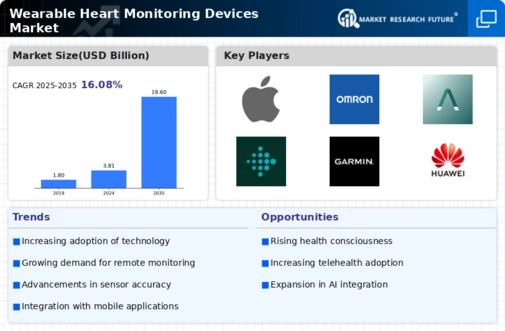

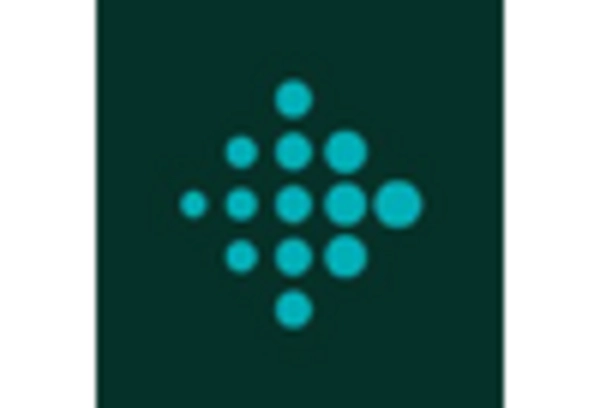
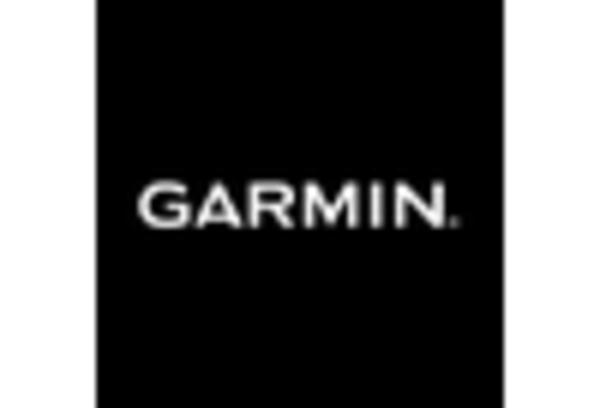
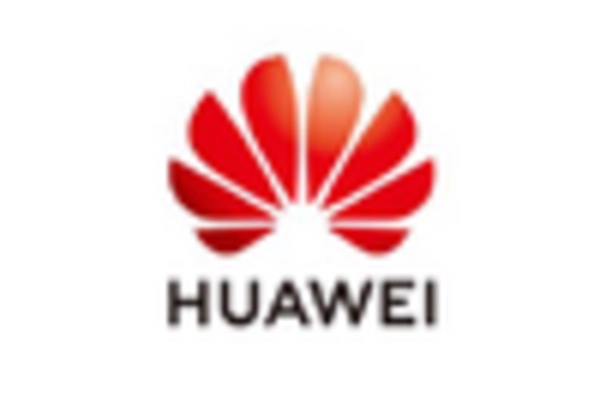

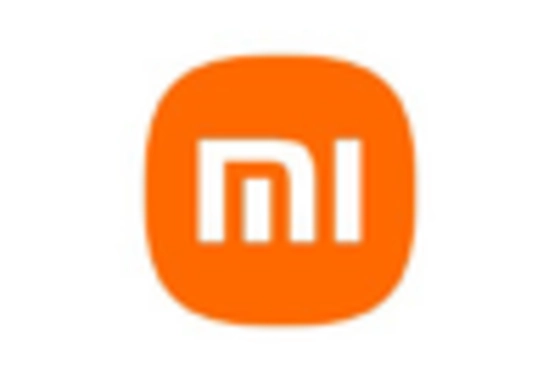

Leave a Comment